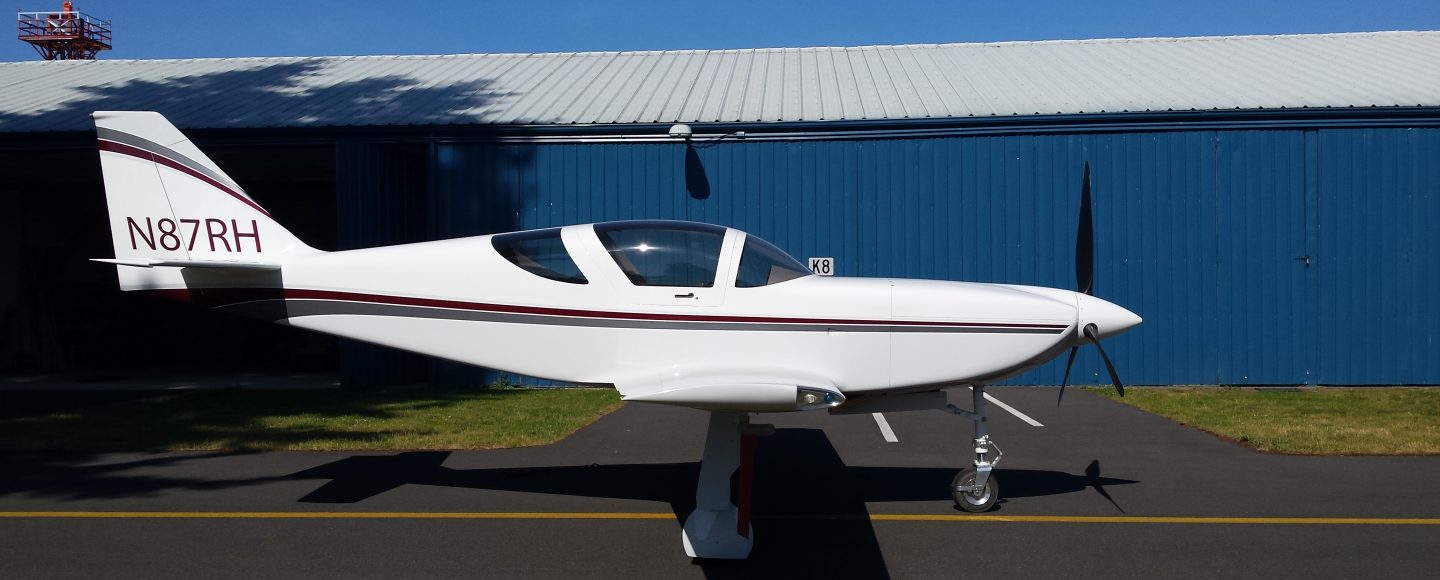Building experimental aircraft from a kit is fairly straight forward. Making changes or mods begins a series of adjustment like a line of dominos falling one after the other. This happened a lot during construction of N87RH. No more so than the firewall forward changes. The biggest of these started with Ron’s choice of an IO-540 that had a forward-facing cold air sump. Monty Barrett took Ron’s brand-new Lycoming engine and made the necessary mods.
With engine in hand and hung in place on the engine mount we found the stock exhaust system interfered with the induction tubes. I was given a box of scrap bent tubing from Stoddard Hamilton to use in mocking up a custom exhaust system. I cut, filed, and fitted each piece to make the mockup which we sent to the vendor that made the exhaust systems for Stoddard. We received a beautiful stainless-steel exhaust system which Ron gave to the local polishing shop to do their magic.
Next, we discovered the cold air engine sump was .4” lower than the stock Lycoming engine and interfered with the landing gear in a major way. After playing with the geometry a bit we ended up making our own drag brace and links from scratch including having a taller bend in the arched plate at the front of the drag brace to allow it to drop lower without contacting the strut during the gear cycle.
Ron wanted the ram air inlet to have a filtered alternate air box which I made from scratch, tooling the fiberglass plug and making a valve from stainless sheet and clevis pins. We used a K&N cone filter attached to the side, but Ron (and I) wanted to keep the external lines of the plane as clean as possible. To install a filter valve in front of the already far forward injector servo without adding a hump to the cowling required us to stretch the cowling forward moving the induction inlet and everything else forward. Besides modifying the cowling, we needed to move the prop forward. We had a former McCauley Propeller engineer put together a prop with a 3.57” hub extension. This new prop with a larger hub required a custom-made spinner and backplate which we tooled and fabricated.


 There is way too much information about each of these steps to share in this post, so I’ll endeavor to make detailed posts of each of these projects later. The post about the spinner design will overflow into the inlet shape and size for the injector servo since they are aerodynamically joined at the hip so to speak. For now, I wanted to simply point out how not simply the modifications were chosen and completed. If you are contemplating any of these mods be forewarned, you can’t just pic one out of the list without committing yourself to doing a series of mods to accommodate what seemed like a simple mod. If you’ve been there, done that, then you know just what I’m talking about.
There is way too much information about each of these steps to share in this post, so I’ll endeavor to make detailed posts of each of these projects later. The post about the spinner design will overflow into the inlet shape and size for the injector servo since they are aerodynamically joined at the hip so to speak. For now, I wanted to simply point out how not simply the modifications were chosen and completed. If you are contemplating any of these mods be forewarned, you can’t just pic one out of the list without committing yourself to doing a series of mods to accommodate what seemed like a simple mod. If you’ve been there, done that, then you know just what I’m talking about.
